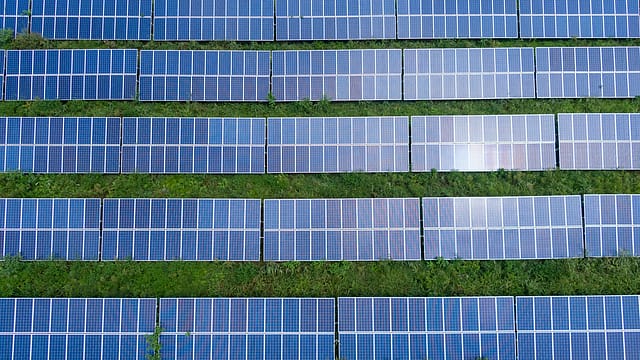2024 Ahoy! Solar-wind capacity additions to fast track
ADVERTISEMENT

Year 2024 will set the tone to fast-track India's renewable energy capacity addition target of reaching over 500 gigawatts (GW) by 2030. Project tendering activity is on the uptrend in the current financial year with over 16 gigawatt (GW) of renewable energy (RE) projects bid out so far and another 17 GW bids underway by central nodal agencies. India added only 15 GW of solar in FY23. This is expected to reach about 20 GW in FY2024.
With that kind of momentum in tendering and construction, the installed renewable energy capacity in India is set to increase to about 170 GW by March 2025 from the level of 132 GW as of October 2023, predicts brokerage ICRA. It says that the capacity addition plan is in line with the 50 GW annual bidding trajectory announced by the Government in March, this year.
The renewed vigour in project execution and bidding has to a great extent been due to the sharp fall in solar cells and module prices. "The sharp decline in solar PV cell and module prices by 65% and 50%, respectively, over the past 12 months is leading to a healthy improvement in debt coverage metrics for upcoming solar power projects," says Vikram V, vice president & sector head - Corporate Ratings, ICRA. A steady decline in the price of solar modules since October 2022 will boost the internal rate of return (IRR) of 45 GW of utility-scale solar project pipeline awarded since fiscal 2021 and this will propel solar capacity implementation to its fastest annual pace of 16 GW this fiscal, says rating agency CRISIL.
December 2025
The annual Fortune 500 India list, the definitive compendium of corporate performance, is out. This year, the cumulative revenue of the Fortune 500 India companies has breached $2 trillion for the first time. Plus, find out which are the Best B-schools in India.
The trend of falling module prices had reversed since the last quarter of fiscal 2021 as higher prices of key raw materials such as polysilicon and aluminium drove up globally and Chinese manufacturers increased module and cell prices. This impacted the returns' profiles of 20 GW of projects auctioned in fiscals 2021 and 2022, as developers had factored in the falling module prices when bidding for capacities. Module prices are typically tied up closer to the installation period of 6-9 months. "Softer module prices will also benefit 25 GW of capacities bid during and since fiscal 2023, as these had higher bid tariffs (₹2.5-2.7 per unit) compared with those awarded in prior fiscals (below ₹2.5 per unit), as they factored in higher module costs," observes Varun Marwaha, associate director, CRISIL Ratings.
Further, the Government's decision to suspend the Approved List of Models and Manufacturers (ALMM) order till March 31, 2024, has come as a boon for the developers and they can rely on cheaper Chinese modules and cells till capacities come up in India. The ALMM was introduced in 2021 as a non-tariff barrier to boost domestic manufacturing with a list of indigenous models and manufacturers. Over 83 Indian manufacturers with over 21 GW were approved under the list.
However, challenges remain on the execution front concerning delays in land acquisition and transmission connectivity, which could hamper the capacity addition prospects. Besides, the developers would remain exposed to movement in imported solar PV cells and wafer prices, till the development of fully integrated module manufacturing units in India, says Vikram of ICRA.
The Government's policy to promote Renewable energy supply round-the-clock (RTC) with solar and wind is expected to help the development of more hybrid power projects in coming years. India has set a target of harnessing 140 GW (out of which 30 GW is offshore wind) installed wind energy capacity by 2030. The plans are to bid out 50 GW of renewable energy capacity annually for the next five years from 2023-24 till 2027-28 and these annual bids every year will include tendering wind power capacity of at least 10 GW per annum. The government plans to tender 4 GW of offshore wind energy blocks soon in Tamil Nadu and Gujarat and then tender 5 GW per year for the subsequent five years. Along with that, the Government is also promoting battery storage manufacturing through schemes like Production Linked Incentives (PLI) for battery chemistry. The rise in the RE capacity over the next six years is estimated to increase the share of RE plus large hydro in the all-India electricity generation from 23% in FY23 to around 40% in FY30.
